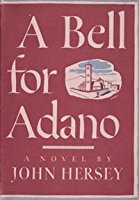Book Review: 'The Pacific'

Cover art by Home Box Office, Inc. (C) 2010 NAL Caliber Books Pros: Interesting concept; vivid anecdotes; compelling characters Cons: None After the phenomenal success of their HBO miniseries Band of Brothers, executive producers Steven Spielberg and Tom Hanks turned to their friend Stephen E. Ambrose, author of the book they had just adapted for TV, and started thinking about future World War II projects they could collaborate on. The Second World War, after all, was a topic Ambrose knew backwards and forwards from his stint as President Dwight D. Eisenhower's official biographer and his subsequent career as a history professor. Ike had - before entering politics in 1952 - been one of America's top generals during the war, rising to the title of Supreme Commander, Allied Expeditionary Force and five-star general before the end of hostilities in 1945, so it was not a stretch for Ambrose to pen several best-selling books about the U.S. ...





